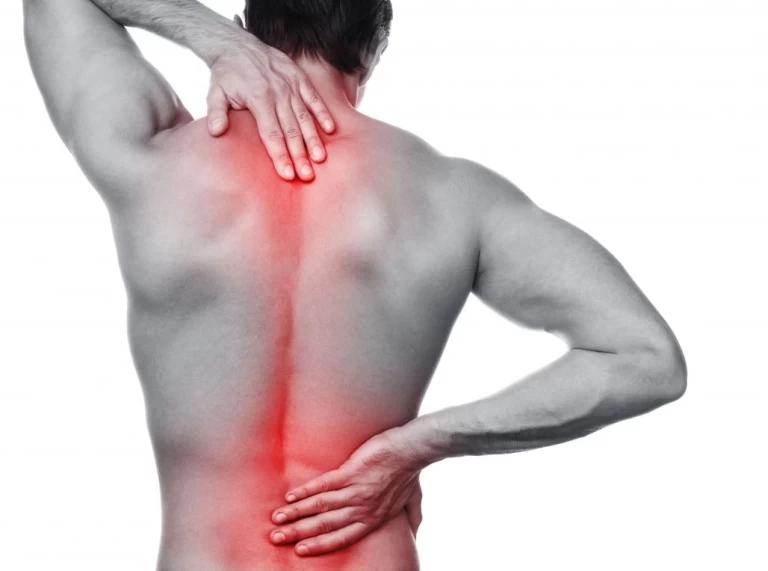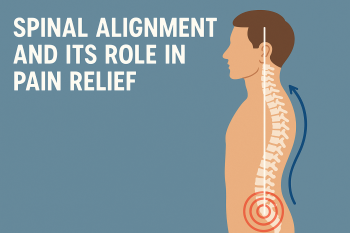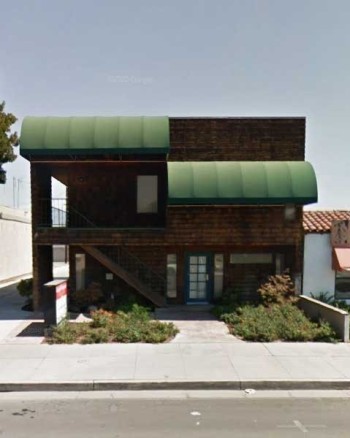
Understanding the Upper Cervical Spine and TrigeminalNeuralgia
The upper part of the spine is known as the upper cervical spineor the craniocervical junction. This area of the spine is the mostmobile part of the spine and is susceptible to injury anddisplacement. The upper neck is also the most neurologicallysensitive area of the spine, and when injured can cause a host ofneurological side effects.
Trigeminal neuralgia is a term used to describe the condition ofintense burning nerve pain along with the distribution of the5th cranial nerve.This nerve has three main branches that extend across the face andjaw. Its primary job is to transmit sensation from the face to thebrain. As the nerve fibers travel from the face back to the brain,they are relayed through the brainstem where its nuclei (or mainnerve cell bodies) begin.
The brainstem is a region of the central nervous system thatinhabits the lower skull and upper neck, being protected by thebony structures of the skull base, atlas, and axis vertebrae. Thereare tissues that form direct connections between the brainstem andthese spinal structures including the dentate ligaments and modularbridge. This means that mechanical tension can be transmitted fromthe upper cervical spine to the brainstem when it has becomemisaligned.
When the nerve fibers of the trigeminal nerve are irritated oraffected by this mechanical tension, symptoms of TrigeminalNeuralgia may develop over time.
How to Understand Trigeminal Neuralgia Symptoms
Trigeminal nerve symptoms differ from other pain syndromes in afew ways. Trigeminal neuralgia is primarily an issue ofhypersensitivity, which means that an otherwise low-grade stimulusto the face or jaw produces an intense pain response. This meansthat very minor brushes, touches, or even the feeling of wind onthe face can trigger an episode of trigeminal neuralgia.
Typically, trigeminal neuralgia occurs in episodes that may lastfor a second in several bouts, or for prolonged periods of time. Itis unpredictable and extremely painful earning the reputation as“the suicide disease.”
What Can Cause Trigeminal Neuralgia Symptoms
Trigeminal nerve symptoms are typically caused by injury orinsult to the nerve fibers themselves or to the central nervoussystem itself. Patients with trigeminal neuralgia typically have ahistory of injury to the cervical spine such as a motor vehiclecollision, concussion, or whiplash-type injury. Trigeminalneuralgia symptoms may also be triggered following dentalprocedures that irritate or damage the lower branch of thetrigeminal nerve. This inflammation and irritation can produce ahypersensitivity of the nerve which then triggers trigeminalneuralgia attacks.
In rare instances, a blood vessel is wrapped around thetrigeminal nerve or its branches causing a constriction.
What to Do About Trigeminal Neuralgia Problems
Most conventional treatments for trigeminal neuralgia includepharmaceutical drugs that are designed to numb or blunt thesensation of nerve pain such as anticonvulsants. Botox injectionsare the second line of treatment if pharmaceutical treatments areineffective or the side effects are too serious. More invasivesurgical procedures can involve nerve ablation, microvasculardecompression, gamma knife ablation, and more.
Most Common Reasons Adults Have Trigeminal NeuralgiaProblems
While each person is different, there are common injuries thatunderlie trigeminal neuralgia for many adults. Injury to the uppercervical spine in a motor vehicle collision, sports injury, orafter a concussion is a very common predisposing factor totrigeminal neuralgia problems. These types of injuries produce amechanical displacement of the upper cervical spine. Thesedisplacements may be highly sensitive neurologically due to thehigh concentration of nerve receptors in the joints, ligaments, andmuscles of the upper neck. The combined structural displacement andneurological compromise to the upper neck are known as an uppercervical subluxation.
The cascade of negative nerve impulses from the damaged tissuesof the upper cervical spine may produce a hypersensitivity of thecentral nervous system to pain, a phenomenon is known as central orperipheral sensitization. This hypersensitivity means that patientswith an upper cervical subluxation may experience abnormal painsensations such as an extreme level of pain to otherwise normalstimulation. As a hallmark of trigeminal neuralgia, these symptomsthat spillover from the injured upper cervical spine may be theunderlying cause of trigeminal neuralgia problems in certainindividuals.
Diagnosis of Trigeminal Neuralgia Problems
The accurate diagnosis of trigeminal nerve problems and theunderlying causes is essential for appropriate and effectivetreatment. To determine if trigeminal neuralgia symptoms may becaused by or related to upper cervical subluxation, a detailedhistory and examination must be performed.
Proper diagnosis is based on the unique features of thepatient’s history, current experience of trigeminal neuralgia, andobjective testing criteria including imaging (x-ray, CBCT, MRI) andneurological testing. In a chiropractic setting, upper cervicaldoctors take a series of very specific x-rays to measure thestructural displacement of the upper cervical spine in order todetermine its most safe and effective correction.
Upper Cervical Chiropractic Treatment for Trigeminal NeuralgiaProblems
Patients with trigeminal neuralgia problems commonly findnatural relief under upper cervical chiropractic treatment. Manypatients who consult with upper cervical doctors have already triedconventional treatments with little to no relief. For theseindividuals, finding lasting relief and a return to normal livingmay literally be a matter of life and death.
Upper cervical treatment will be focused on detecting anyoverlooked neck injuries that are causing nerve irritation to thecentral nervous system or trigeminal nerve nuclei. Using safe andeffective adjustment procedures upper cervical doctors work tocorrect the spine without twisting, popping, or cracking the jointsof the neck. Overtime patients are monitored to be sure that theyare maintaining their alignment so that they can heal and recoverfrom trigeminal neuralgia problems.
Co-management with other specialists may be required to achievemaximal resolution, and upper cervical doctors routine






Leave a comment